Spider Plants (Chlorophytum comosum), or also known as Airplane Plant, are tropical plants that are popular houseplant species or indoor plants.
Their distinctive plantlets are usually cultivated after being cut from its mother plant, then will eventually grow to be baby Spider Plant offshoots or mature Spider Plants.
Even if they are quite low-maintenance plants and hardy plants, they may develop wilted leaves if they have received too much or not enough indirect light, or due to improper watering issues.
In these cases, adjusting your watering schedule or the plant’s position to achieve its bright lighting requirements will often be enough to solve the problem.
The drooping might also be a sign that your plant needs to be fertilized or repotted in a bigger container.
Finally, an inappropriate ambient temperature might be what’s stressing your plant.
- Related article: Growing Spider Plants Indoors
Here’s a list of common Spider Plant problems that lead to drooping and developing dead leaves with brown spots, plus how to fix them!
1. Underwatering: Soak and Repot
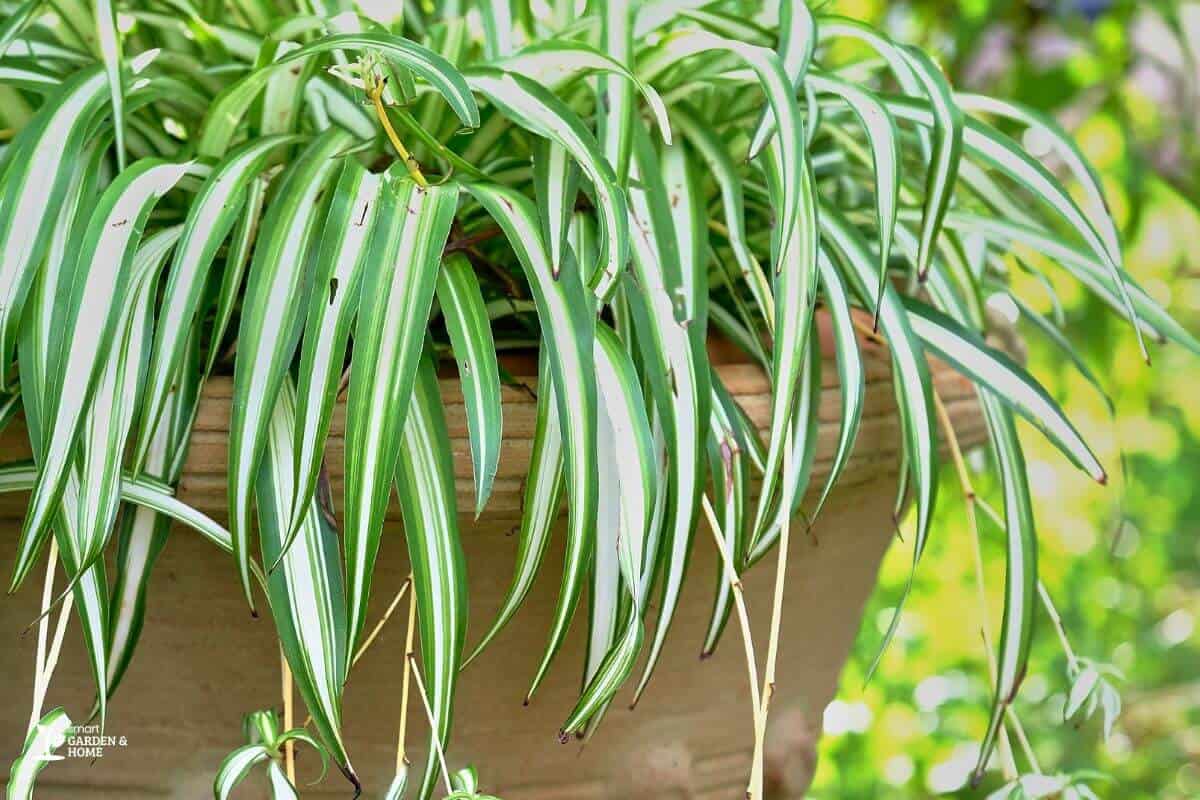
If you have forgotten to water your Spider Plant for a while, especially during the hot summer months, it’s probable that it is suffering from dehydration.
It’s important to consider that if a plant has been placed in a hot or sunny spot, it may have difficulty retaining necessary moisture, regardless of your watering habits.
To address the lack of water, immerse your Spider Plant in a receptacle filled with clean water and leave it to soak for approximately an hour.
In most cases, this is enough to revitalize the plant. If it isn’t enough, then it might be a soil issue, which can be dealt with by repotting the plant.
Choose a potting mix that is well-draining but not excessively so, or the Spider Plant won’t be able to absorb enough water.
Then make sure you place your plant in an area that isn’t exposed to direct light and where the ambient temperature is below 80°F.
2. Overwatering: Repot
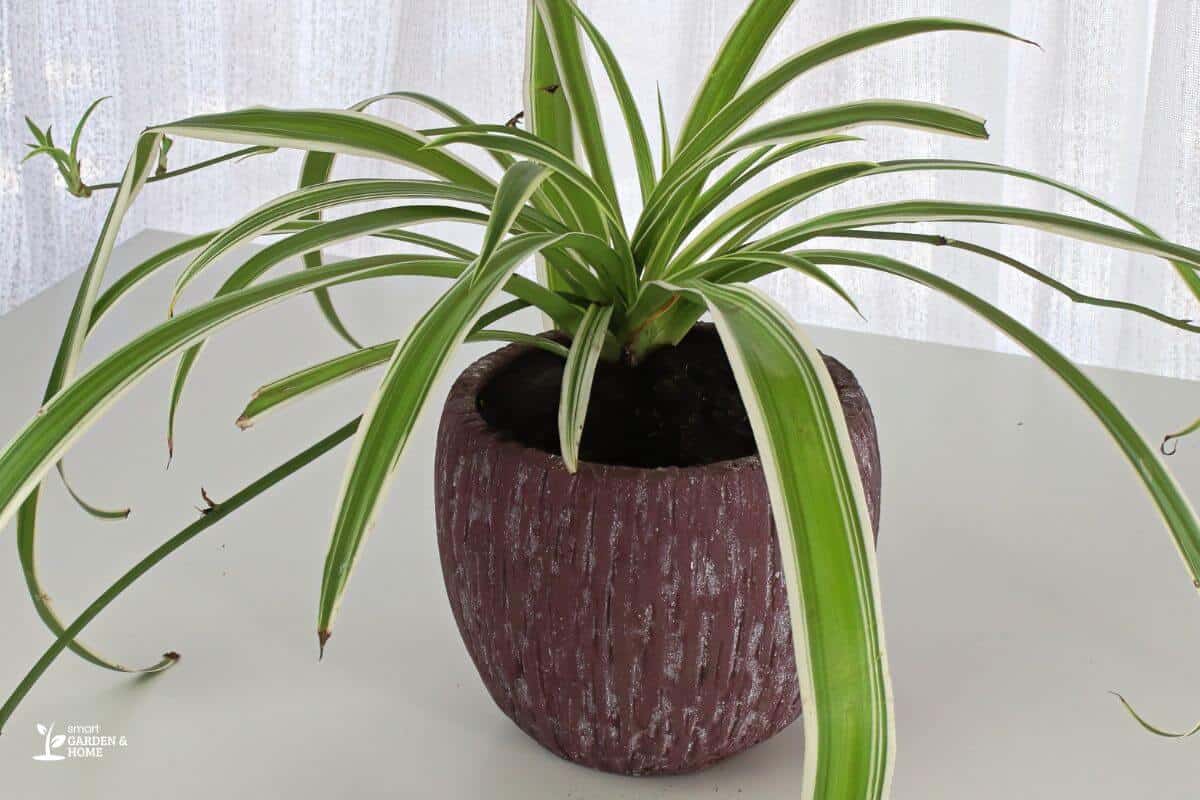
Perhaps it can seem contradictory, but excess water can also cause Spider Plants to wilt.
This is because if the soil is kept constantly wet, Spider Plants’ roots will suffer and become unable to absorb both nutrients and water, causing the plant to dehydrate.
When its leaves lose its green color and look bleached or show dark edges, they have kept too much plant moisture due to extra water for too long.
The perfect time for Spider Plants to be watered would be when the top few inches of soil feel dry and not before, or they often develop dead roots or root rot.
If your Spider Plant is wilting because of root rot, it is important to act quickly to avoid the death of the plant.
Repot it in fresh, well-draining soil, rinsing the roots and cutting away all the damaged ones.
3. Inappropriate Light: Move the Spider Plant
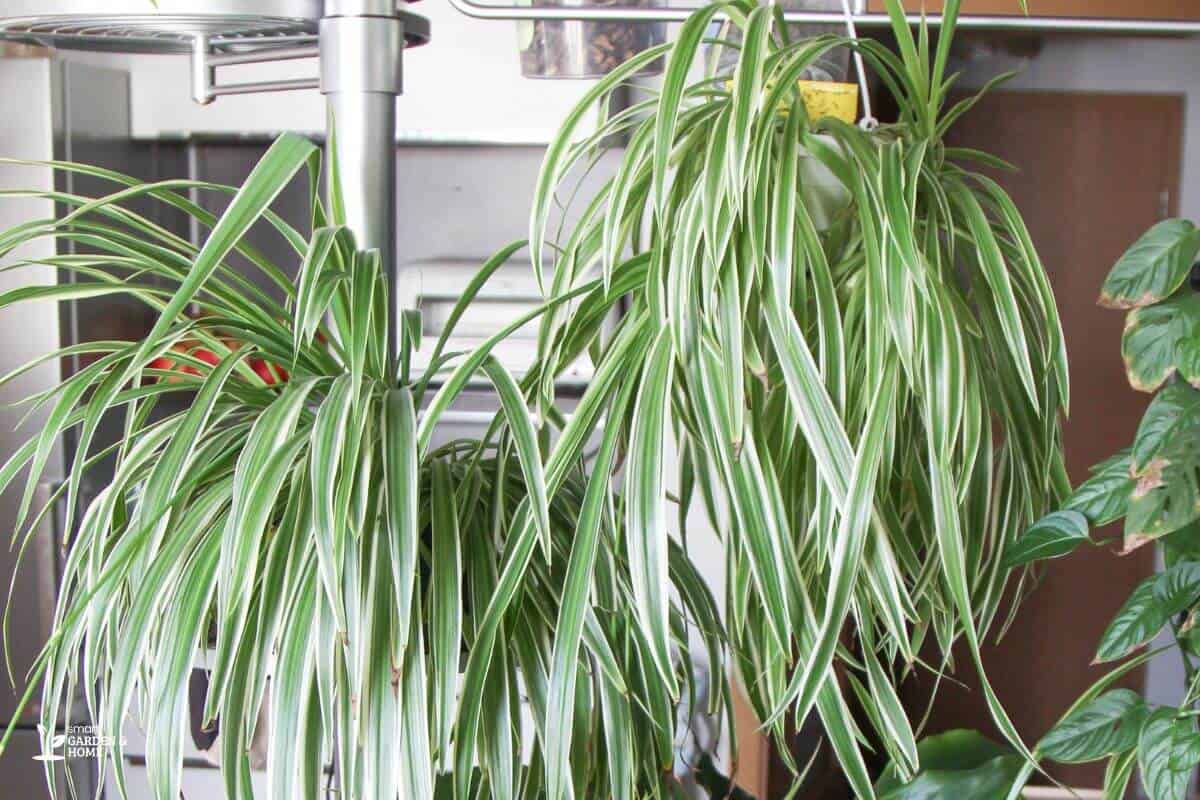
Spider Plants can wilt if they don’t get exposed to the right amount of bright light per day.
Keeping a Spider Plant near a window in full, direct sunlight might cause leaf burn: the foliage will lose its color and will have brown leaf tips.
Conversely, a plant in full shade won’t have enough energy to sustain itself. When a plant isn’t able to photosynthesize, it will start wilting and eventually die.
When the issue is not enough light, you should be able to reverse the wilting quickly by moving the Spider Plant to a sunnier spot.
In the case of excessive levels of light and heat, it might be wise to soak the plant for a few minutes before moving it to a cooler spot.
Remember that Spider Plants need to be exposed to bright, indirect sunlight.
You might need to change the position of your plant according to the seasons since a spot that receives plenty of light in the summer might be too dark in the cold season.
4. Pot-Bound: Repot
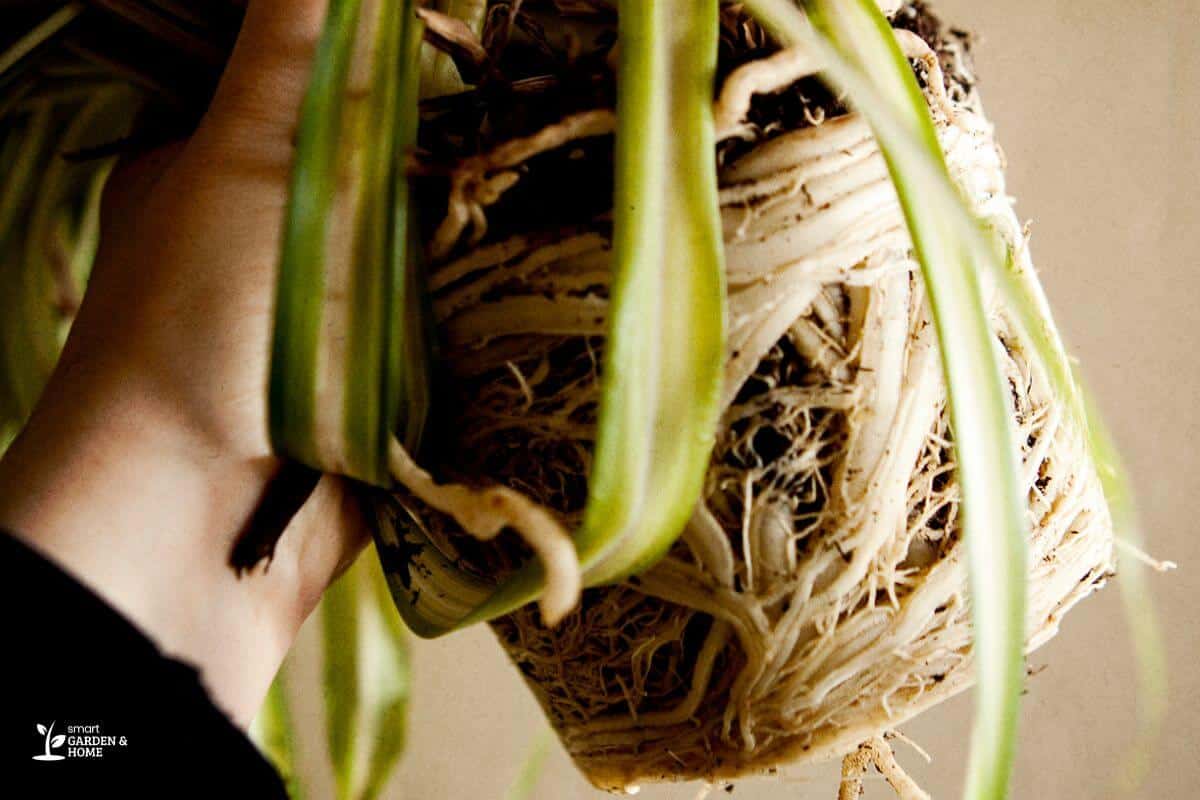
Spider Plants enjoy being slightly pot-bound, but if you haven’t repotted yours in more than a year, this might be the cause of the wilting.
In extreme cases, the roots will start to grow out from the drainage holes or show up on top of the soil.
It’s best to act before this happens as it can lead to stunted growth.
The best prevention is to repot your Spider Plant about once a year, which will also provide it with plenty of nutrients from the new soil.
To reverse the wilting of a pot-bound Spider Plant, transplant it into a larger container that is one size bigger than the current one.
Make sure it has drainage holes and that you choose a potting mix that is well-draining.
Water until the fresh soil is wet but not soggy, and keep in mind that repotting can be stressful: your Spider Plant might take a while to recover completely.
Rest assured that with the right TLC, it will be as green and vital as ever.
5. Nutrient Deficiency: Fertilize Regularly
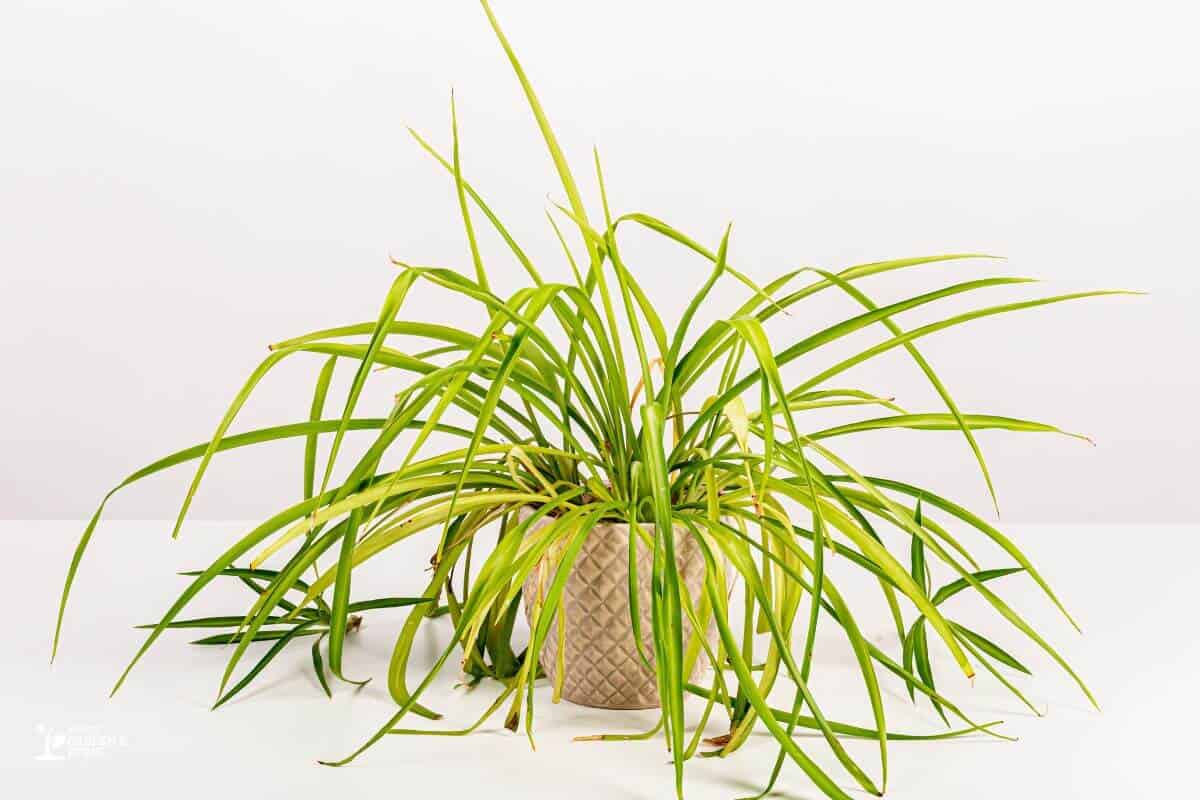
Spider Plants don’t need many nutrients but if you have ruled out all other possibilities, then your plant might need to be fed more often due to lack of nutrients.
Nonetheless, it’s important to avoid exceeding in fertilizer because overfed plants can lead to other issues.
The correct type of fertilizer for Spider Plants is organic fertilizers either in granules or liquid form, paired with organic potting soil.
You should always follow the directions on the package: dilute the liquid fertilizer so it doesn’t burn the leaves or cause salt buildup.
Never fertilize during the cold months of the year, since Spider Plants are dormant and won’t absorb the nutrients.
Liquid fertilizers act faster but will need to be applied more often, up to once per week during the active growth stage.
They might be a better choice when the foliage is very wilted. The solid ones are the opposite and using them just once per season might be enough.
6. Inappropriate Temperature: Move the Plant
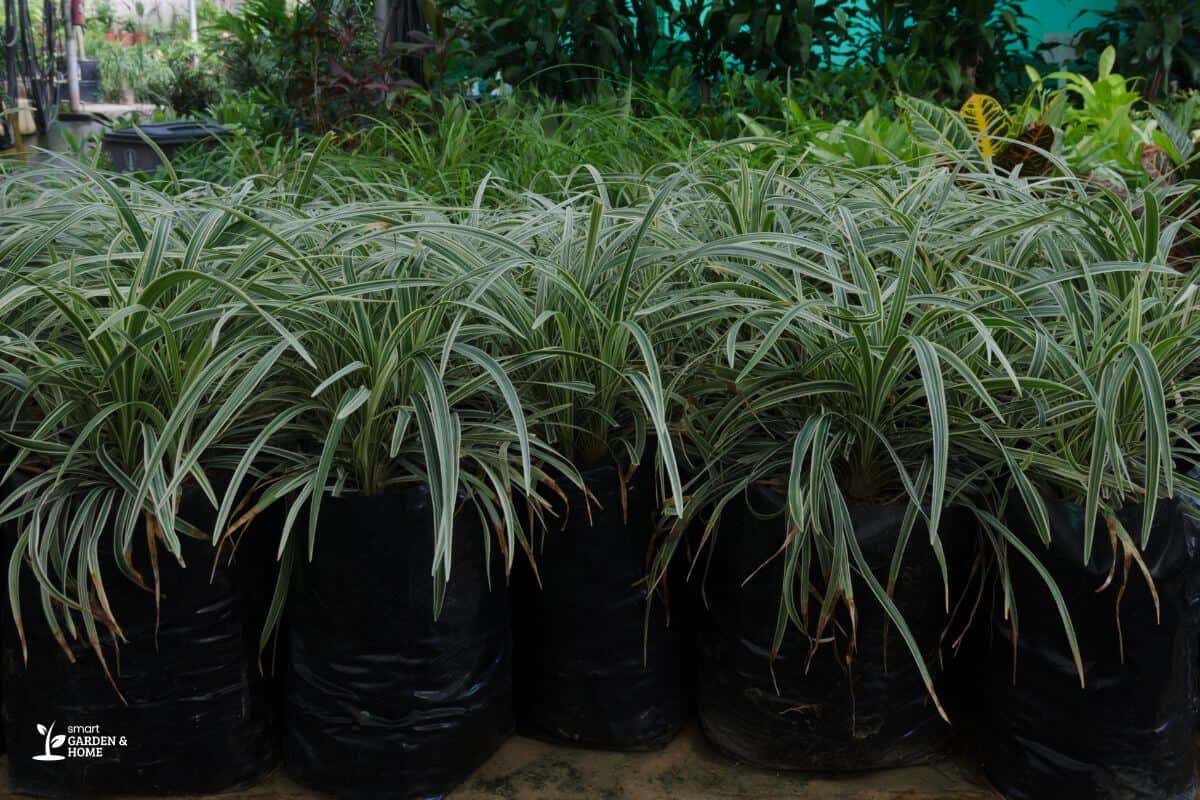
Spider Plants aren’t very fussy about temperature, but excessive heat or coldness can make them droop.
The leaves may deteriorate and change color in cold weather while excessive heat may result in the plant’s death.
To ensure the growth of a healthy Spider Plant, it is recommended to maintain a temperature range of 55°F to 85°F, with the most ideal range being 66°F to 76°F.
To improve the chances of recovery for the plant, it is recommended to remove any damaged foliage or any soft leaves.
Consider that a spot that’s too sunny could easily become excessively hot during certain hours of the day.
You should move the Spider Plant to an area with an appropriate temperature as soon as you notice signs of distress.
If you have outdoor Spider Plants, place it in a cool, shadier spot, and bring it indoors as soon as the temperatures start to drop in the fall or winter months.
Final Thoughts on Drooping and Wilting Spider Plants
If you have been wondering why you have droopy Spider Plants, there could be several common issues behind it, and it’s significant to do a bit of troubleshooting before taking action.
In order to rectify drooping, it is crucial to determine the underlying cause, which may be attributed to either insufficient or excessive watering, as it is a common problem.
To ensure the optimal growth of your Indoor Spider Plants, it may be necessary to provide suitable environmental conditions such as adequate levels of light, temperature, and humidity.
Transform your home into a lush oasis with the help of our expert gardening tips! Watch as your Spider Plant flourishes with health and vitality, adding life and beauty to your space for years to come.
Make sure to give your Spider Plant the attention it deserves to avoid droopy leaves, and it will reward you with lush foliage and beautiful blooms!
Check out these interesting articles to know more information about Spider Plants:
- Can You Save a Dead Spider Plant
- Spider Plant Not Growing Fast
- Spider Plant Health Issues
- Rooting Spider Plant Spiderettes
- Bushier Spider Plants
Sources:

